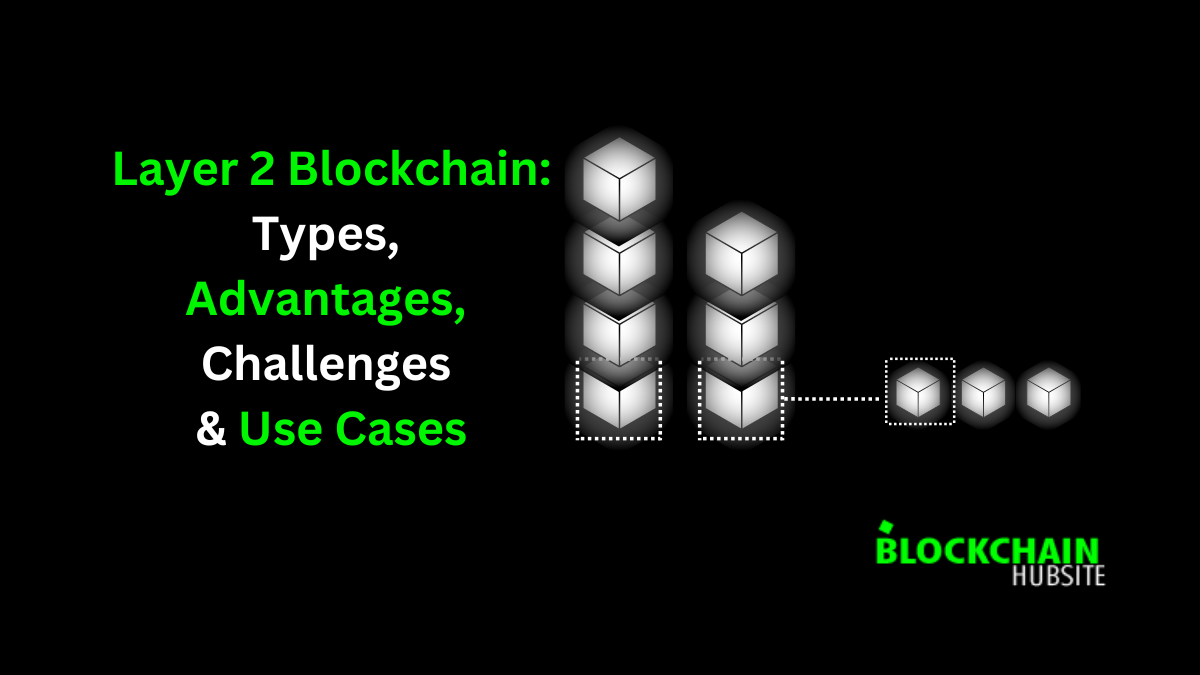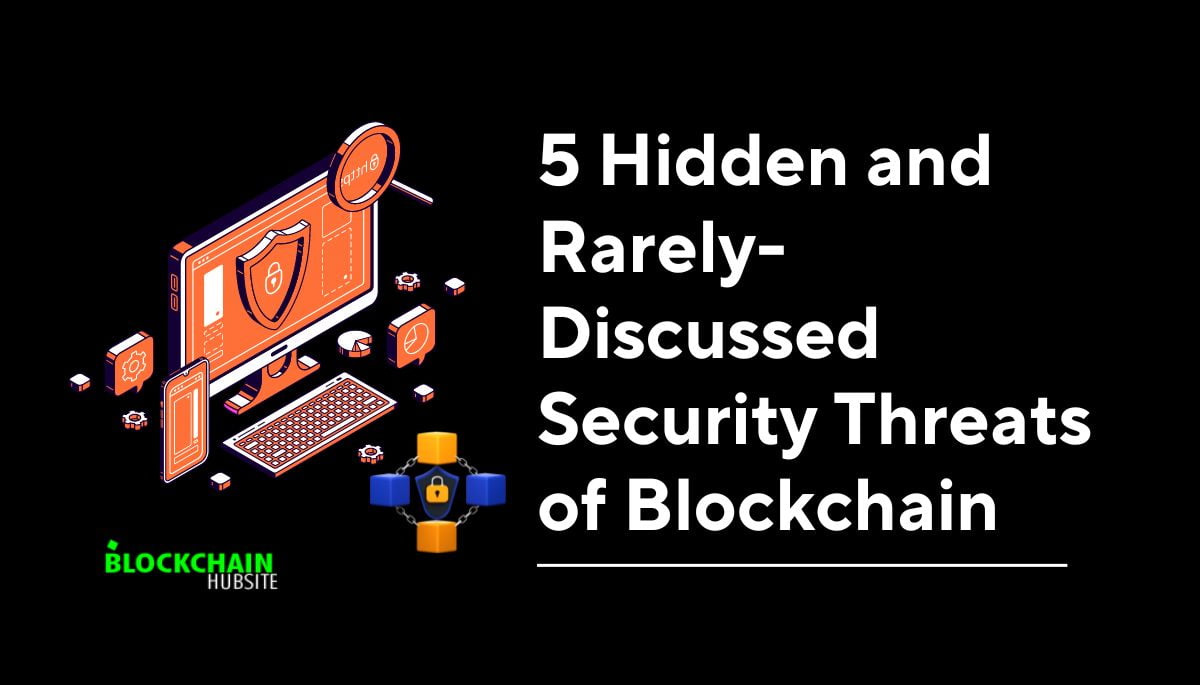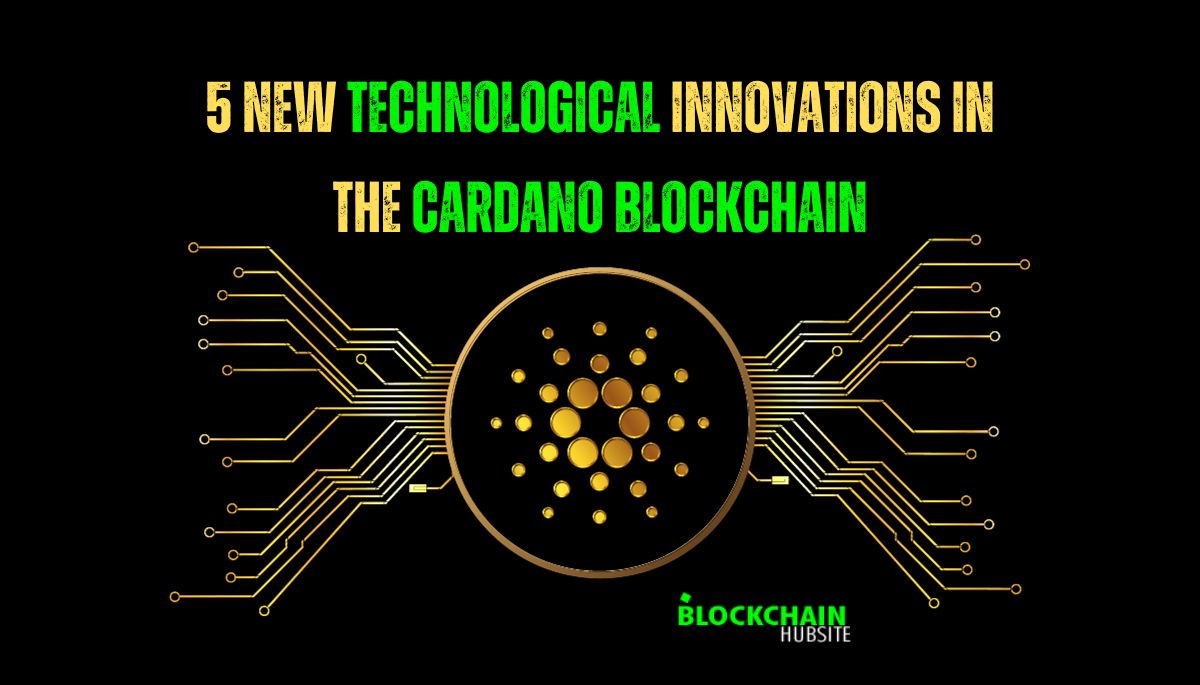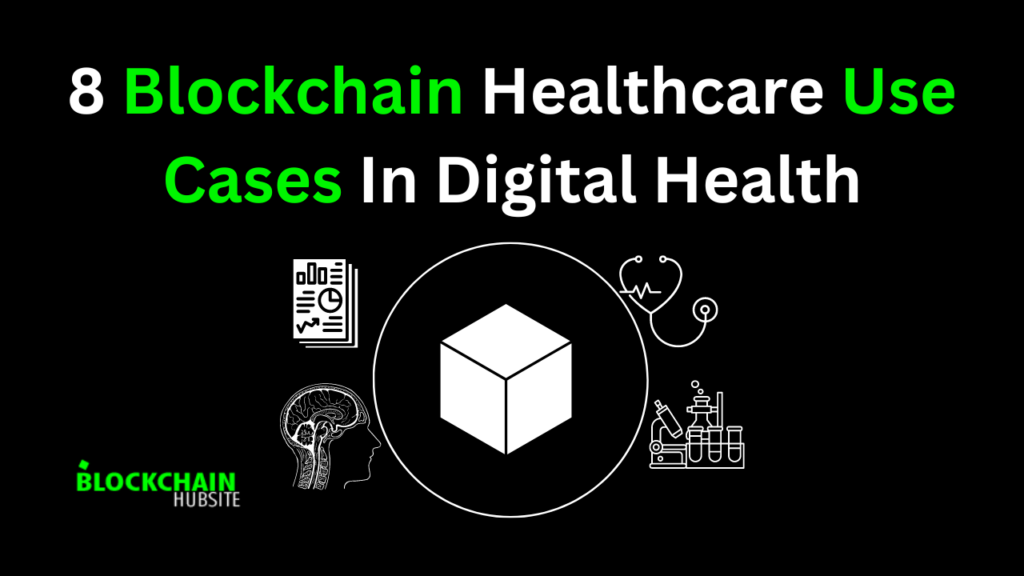
Table of Contents
Introduction
Are we talking about the newest blockbuster here? No! We’re discussing the efforts of the humble old blockchain to scale to meet the demands of its rapidly expanding user base. Let’s examine layer two blockchains and how they’re helping existing blockchains grow in scope today.
The capacity to transfer currency across accounts without human intervention is at the heart of the extraordinary wave of innovation that blockchain has sparked. However, blockchain does have certain practical restrictions despite its obvious benefits. This is because the system was not created with expansion in mind.
The more people use older networks like Ethereum or Bitcoin, the slower and more expensive transactions will become. This eliminates any possibility of their widespread adoption. The question then becomes how blockchain’s potential benefits may be broadly applied.
The security and decentralization of a blockchain can be affected by efforts to increase scalability. Layer 2 blockchains use several techniques to increase the capacity of their primary networks. But before we get into the specifics, here are some things you should know:
What is Layer 2 Blockchain?
Just as the second story of a house is built on top of the first, so too is a Layer 2 network constructed on top of a Layer 1 blockchain. This extra layer will offload transactions from the mainnet and process them independently to improve the network’s transaction speed and efficiency.
Layer 2s can dramatically boost network capacity and decrease congestion by shifting transactions off-chain to a separate network. Resolving Vitalik Buterin’s famous blockchain trilemma greatly enhances the user experience by granting us quicker blockchains and lower gas fees.
Most crucially, all application Layer 2 networks use an EVM (Ethereum Virtual Machine), facilitating the rapid rollout of dApps, smart contracts, and algorithms built on Ethereum.
Additionally, the security and consensus of the underlying blockchain are available to Layer 2 solutions. Scaling blockchain networks without compromising security, decentralization, or trustlessness is possible using Layer 2 networks.
Why Layer 2 is Needed
Despite the limitations of layer-1 blockchains in terms of scalability and speed, their growing popularity and the resulting abundance of liquidity have prompted the development of layer-2 blockchain solutions like the Ethereum-based Polygon blockchain and the Bitcoin-based Lightning Network.
These L2 blockchain solutions allow thousands of low-value transactions to be validated on a separate blockchain and transferred to the main blockchain (mainnet) for permanent recording.
To meet demand that exceeds the blockchain’s 1+ million transactions per day capacity, a group of Ethereum scaling solutions known as “layer-2 solutions” was developed.
Since these secondary blockchains can process more transactions per second, have cheaper gas prices, and guarantee that all transactions are permanently recorded on the mainnet, they are increasingly used to extend use cases and give a better end-user experience.
L2 blockchain solutions effectively redirect the transactional strain onto their parallel network, relieving mainnet congestion while still ensuring that the mainnet manages important decentralization, data availability, and security features.
This addresses the scalability issues that have plagued layer-1 blockchains like Bitcoin and Ethereum and makes the highest level of decentralized security available to the growing number of DApps in use today.
How do Layer 2 solutions work?
In general, L2 solutions are a foundation for dealing with transactions and computations not part of the L1 blockchain. These off-chain transactions are then batched and settled on the L1 chain at scheduled times, relieving stress on the main chain. In general, there are a lot of different Layer 2 solutions out there, but the two most common are optimistic rollups and zero-knowledge rollups (or zk rollups).
Both optimistic and zk rollups use a component known as a sequencer to function correctly. This sequencer improves productivity by performing operations in batches, collecting and settling several off-chain transactions at once on the L1 blockchain. By lowering the amount of on-chain data that needs processing and storage, this method reduces the computational load on the main chain and transaction costs, allowing for cheaper, more efficient transactions.
L2 blockchains can outperform L1 blockchains in terms of transaction speed since they offload L1 transactions to off-chain processing. The improved user experience directly results from the increased efficiency that enables near-instantaneous confirmations of transactions.
Major Types of Layer 2 Solutions
State Channels
Layer 2 solutions like state channels enable many off-chain transactions to be conducted by multiple parties without the need for each transaction to be broadcast to the entire networkThis can greatly enhance a blockchain’s scalability by reducing the volume of transactions on the network and the associated fees.
The Lightning Network is known as the Layer 2 protocol that runs atop the Bitcoin blockchain and uses state channels.
Users of the Lightning Network can perform several transactions off-chain without having to notify the entire network of each one. This development greatly benefits the Bitcoin blockchain’s scalability, settlement speed, and transaction costs.
Sidechains
Sidechains are separate blockchains that are connected to a main chain. This allows certain assets to be moved between them. This can promote interoperability amongst blockchain networks by allowing them to communicate and trade assets.
A major problem of sidechains is that they must fund their security using a consensus method such as Proof-of-Stake (POS) or Proof-of-Work (POW) because the primary Layer 1 chain does not protect them.
The Liquid Network is an example of a Bitcoin-related sidechain. Liquid BTC (LBTC) is Bitcoin pegged to the Liquid Network. This can increase liquidity, make transactions faster and cheaper, and open the door for identifying new assets on the network.
Polygon PoS and XDai/Gnosis are two examples of Ethereum sidechains. Here, programmers can access free XDai/Gnosis and Polygon API endpoints.
Optimistic Rollups
To execute smart contracts off-chain without broadcasting each transaction to the entire network, Optimistic Rollups provide a Layer 2 solution for Ethereum. This boosts Ethereum’s scalability and decreases transaction fees.
Layer 1 of Ethereum provides security for optimistic rollups because all transactions are settled on Ethereum. But the problem is that these Rollups “optimistically” assume that transactions are valid, and they require a seven-day verification challenge before you can withdraw your funds to the Ethereum main chain.
Rollups include but are not limited to, Arbitrum and Optimism. Since they are compatible with the Ethereum Virtual Machine (EVM), any Ethereum-based application may be readily converted. Get a free Optimism endpoint here if you want to try it out, or an equally free Arbitrum endpoint here.
Late in 2022, Optimism introduced the OP Stack as an extension of Optimism to facilitate the development of blockchains and other novel experimental use cases. It can also allow Rollups to settle on Bitcoin and let its users create OP Craft (Minecraft on top of Optimism, a fully on-chain voxel environment).
As a response, Arbitrum introduced a new blockchain called Arbitrum Nova, which boasts even greater transaction volumes and lower transaction costs.
Fee reductions of 10-100x are possible for users of Ethereum as more transactions are processed with rollups. That depends on a proposal known as EIP 4844, which will be rolled out in the latter half of 2023.
Zero-Knowledge Rollups (ZK-rollups)
Zero-Knowledge Rollups then publish minimum summary data to the main chain using Zero Knowledge Proofs (ZK-proofs) to verify the legitimacy of thousands of transactions in a single batch. In a Zero-Knowledge Proof, the prover can convince the verifier that a statement is true without letting the verifier know anything about the statement.
This can make blockchain transactions more private by preventing the disclosure of sensitive data during the verification process. Zero Knowledge Proof technology is expected to play a significant role in developing enterprise use cases, allowing users to choose to provide information to third parties while securely sending critical data.
The following are three ZK-rollup blockchains:
Starknet
Starknet is a permissionless, distributed, layer-two blockchain based on zk-rollups, and it is currently available as an Alpha release on the Ethereum Mainnet. StarkNet is similar to other Layer 2 alternatives in that it performs transactions and sends them bulk to the Ethereum mainnet through STARK proofs. Here, programmers can access a free Starknet test net endpoint.
EVM Polygonal ZK
Z-K Polygon Currently in its Testnet phase, EVM plans to launch its Mainnet in 2023. Polygon also has a privacy-focused ZK-enabled rollup for business applications dubbed “Nightfall,” created in collaboration with Ernst & Young.
ZKSync
MatterLabs’ ZKSync is now in “baby alpha” on Mainnet, which means the development team is still testing and auditing the product. However, ZkSync 1.0 can be tested with cryptocurrency wallets such as Argent.
Plasma
Ethereum’s Plasma layer two solution employs child or secondary blockchains to aid the main chain in the verification process. Plasma chains are comparable to Polkadot’s parachains or smart contracts. They are organized differently in a hierarchy to remove transactions from the main chain, reducing work and increasing scalability.
L1 Vs. L2
Layer 1
- Most transactions cost $5 or more
- Around 14 transactions can take place every second.
- Security is a top concern that slows down the blockchain.
- Decentralized—cannot be modified or stopped without wide consensus
Layer 2
- Fees for most transactions average less than $1.
- Able to handle possibly thousands of transactions in a matter of seconds
- Still, security is very tight, but sometimes speed can be sacrificed
- There are worries regarding the dependability and independence of some Layer 2 chains because they are significantly more centralized than Layer 1 chains.
Benefits of Layer 2 Blockchains
Ethereum’s Layer 2 market is the busiest, but others are out there. This is because Ethereum has the most decentralized apps but can only handle 15 transactions per second.
Therefore, Ethereum becomes crowded, and gas fees for basic transactions might cost hundreds of dollars during periods of high network activity. Ethereum Layer 2 solutions address this issue by providing the following benefits:
1. Faster transactions: Layer 2 chains like Polygon, Optimism, and Arbitrum are built to handle massive transaction volumes, making transactions faster than Ethereum. They allow transactions at speeds of up to 65k, 2k, and 40k per second, respectively.
2. Lower gas fees: Since Layer 2 chains can handle more transactions, users don’t have to pay more to do their transactions before others. So, gas prices will continue to be reasonable.
3. Maintaining high security: Even as Layer 2 networks handle transaction processing by verifying and settling data at the Layer 1 level. ALL TRANSACTIONS ARE SAFE because L2 networks are built on top of the main blockchain.
4. Diversified use cases: L2 blockchains provide speed and scalability, and their applications are expanding. This paves the way for developing a wider variety of apps, including those with greater computational requirements or attracting many users.
Challenges With Layer 2 Adoption
Layer 2 solutions offer many advantages but have their downsides.
To start, L2 may reduce the underlying chain’s liquidity. It is no surprise that liquidity is crucial to developing a successful market. For example, Ethereum requires a robust market to adequately back all its tokens and assets. However, the blockchain’s liquidity is likely to decrease whenever a new layer is introduced.
Users may also need help getting started with the platform for no good reason. The L1 chain and associated dApps will require new accounts once an additional layer has been installed. The user may need help keeping track of their money if it is transmitted to many L2 protocols.
Clearly, there is a price to pay for Layer 2’s benefits. However, if reducing the load on the main blockchain’s transaction throughput is a major concern, Layer 2 is a great asset.
Use Cases of Layer 2 Blockchains
Here are some important ways that layer two blockchains can be used:
Scaling: Layer 2 solutions like rollups, state channels, and sidechains can help Ethereum and another layer one blockchain grow by taking transactions off the main chain. This helps improve the speed of transactions and reduces traffic and fees on layer 1.
Payments: Payment and micropayment systems can be built on layer two chains like Lightning Network and use low-cost and nearly instant transactions. It can be used for recurring payments, tips, and machine transfers.
DeFi: Apps for decentralized finance can use layer two solutions to make deals, loans, and other services faster and cheaper. For instance, DeFi works on projects called “optimistic rollups.”
Gaming: Crypto-based games need to be able to handle a lot of small purchases. Layer 2 solutions like ImmutableX give NFT-based gaming the throughput and cheap fees it needs.
Private Transactions: Some layer two solutions, like ZkRollups, allow for private transactions by using zero-knowledge proofs to keep transaction data private.
Interoperability: Through layer two links, protocols like Wanchain allow assets and dapps on different chains to work together. Useful for joining DeFi ecosystems that are far apart.
Security: Keeping computing and storage off-chain can make some layer one blockchains safer than they would be otherwise. For protection, transactions can be moved back to layer 1.
Future of L2 blockchains
Developments in both L1 and L2 blockchains will be driven by the need for scalability, quick transaction times, and cheap gas fees as blockchain technology continues to see significant real-world adoption. Since L1 blockchains like Ethereum plan to make changes to the consensus process and add new features like sharding, this will have a bigger effect on L2 blockchains that are connected to them.
L2 blockchains can offer significantly faster transaction times and lower costs to previously unseen levels. These benefits and the widespread adoption of L2 blockchains will promote the development of innovative new applications, particularly in the DeFi sector.
More bridges across L2 blockchain systems will also allow users to utilize increased blockchain interoperability, which can lead to novel opportunities in fields like digital asset trading.
Developers must ensure that growth is sustained without compromising the security, decentralization, and scalability for which blockchains are known for L2 scaling solutions to play a vital role in fostering a multichain future.
The global crypto community must collaborate to develop and release L2 scaling solutions and decentralized applications (DApps) that facilitate the shift to a decentralized economy.
Closing thoughts
L2 solutions are crucial for addressing scalability, lowering congestion, and decreasing fees in L2 blockchain networks. Since there are questions regarding the genuine decentralization and security of L2 systems, the discussion surrounding them is vital. Some even go so far as to say that to create a trustless system; networks must disperse their sequencers.
In the end, L2 solutions are crucial to the development of the industry and the widespread implementation of blockchain technology. The development teams working on roll-up technologies are working on more decentralized models, equitable control distribution, and adding support for staking and revenue sharing. Therefore, it is crucial to the future of blockchain that we comprehend L2 solutions, their advantages, and their working mechanisms.
DISCLAIMER: The content of this article does not constitute financial advice and is for informational purposes only. The price of digital assets can go down as well as up, and you may lose all of your capital. Investors should consult a professional advisor before making any investment decisions.
FAQs
1. How does a layer-2 blockchain differ from a layer-1 blockchain?
Blockchains at the first, or base, layer are the foundational architecture for a decentralized ledger and consensus mechanism. Layer-1 blockchains include the most well-known cryptocurrencies, Bitcoin and Ethereum. But layer-2 blockchains are only additional protocols constructed on these layer-1 networks. They are meant to improve the original blockchain’s functioning without requiring any changes to the layer-1 blockchain, such as by increasing transaction speed, decreasing costs, or increasing scalability.
2. How do state channels work in layer-2 blockchains?
One of the most common forms of layer-2 solutions is the state channel. They move blockchain interactions into private channels between parties. Participants can make unlimited purchases and sales with no waiting time or network expenses when a channel is set up. After transactions are complete, the layer-1 blockchain settles the final state. This method significantly lessens the strain on the blockchain, which helps the network scale.
3. Are there any security trade-offs when using layer-2 solutions?
Despite the many benefits, layer-2 solutions may have specific security drawbacks. Since layer-2 solutions rely on the integrity of the layer-1 blockchain, a flaw in the foundation might compromise the entire system. Some layer-2 solutions may also depend on trusted validators or operators, reintroducing centralized points of failure because they handle transactions off-chain. Many layer-2 solutions, however, aim to lessen these dangers and boost security in general.
4. How do layer-2 blockchains address the problem of high transaction fees?
Since most transactions in a layer-2 blockchain occur off-chain, this solves the problem of high transaction costs. Since there is less demand on the main blockchain, there is less competition for block space, and thus, transaction costs go down. Only the opening and closing of a state channel are recorded on-chain, while its transactions are handled off-chain, making them cost less.
5. Can layer-2 solutions support smart contracts?
Yes, layer-2 solutions can support smart contracts. Layer-2 solutions for Ethereum, such as Optimism and zkSync, aim to improve transaction speeds and lower transaction costs while fully helping Ethereum smart contracts. Since developers can continue to use their preferred frameworks and languages, users can benefit from faster and cheaper smart contract execution.
6. What are some examples of successful layer-2 blockchain projects?
There have been several successful layer-2 blockchain initiatives. Fast and cheap Bitcoin transactions are made possible by the Lightning Network, and Ethereum’s Optimism and zkSync boost scalability and lower transaction costs while still providing full support for smart contracts. Regarding Ethereum-compatible blockchain networks, Polygon is another successful project that provides a framework for developing and linking these networks.
7. Are layer-2 solutions interoperable with layer-1 blockchains?
Yes, layer-2 solutions are built to work with layer-1 blockchains. Opening and closing state channels, uploading batched transactions, and transferring assets between chains are all examples of procedures that involve direct interaction with the underlying blockchain. This architecture permits layer-2 solutions to leverage the blockchain’s security while expanding upon its core features.
8. How do layer-2 blockchains handle consensus and validation of transactions?
Depending on the implementation, layer-2 blockchains have varying mechanisms for achieving consensus and validating transactions. For instance, in state channels, everyone concerned reaches an agreement. Separate from the layer-1 blockchain, sidechains may have their consensus method. Transaction data in rollup-based solutions is published to the layer-1 chain, while the processing happens off-chain. Each of these layer-2 approaches relies on the immutability and transparency of the underlying blockchain to complete transaction settlement.
9. Can layer-2 solutions enhance privacy and confidentiality in blockchain transactions?
Yes, layer-2 solutions can make blockchain transactions more private and secure. State channels are one such mechanism, as they permit parties to perform transactions in secret, with just the final result being published on the main blockchain. Similar privacy-enhancing features can be built into particular sidechains. However, the level of security provided is conditional on the specific layer-2 solution implemented.




